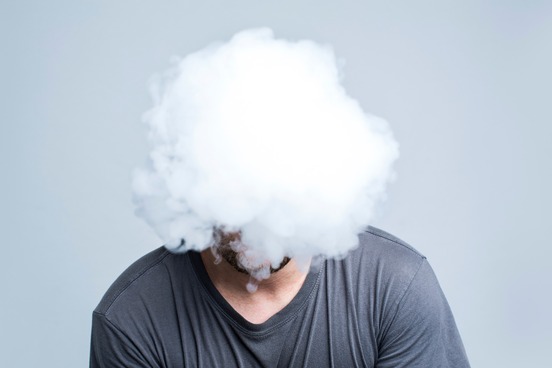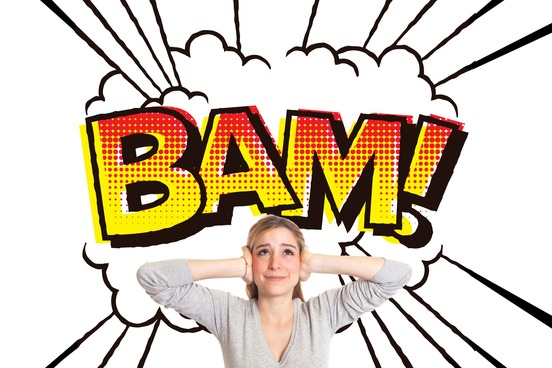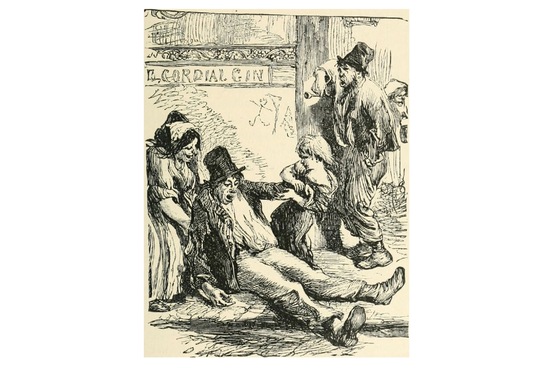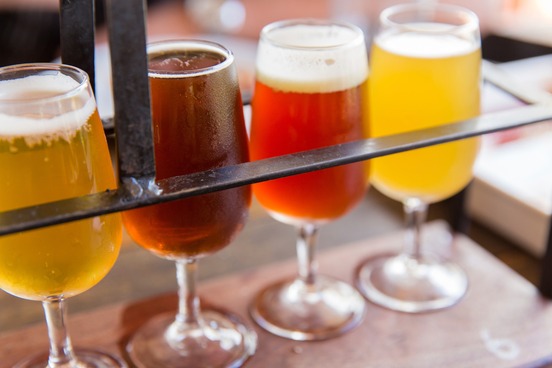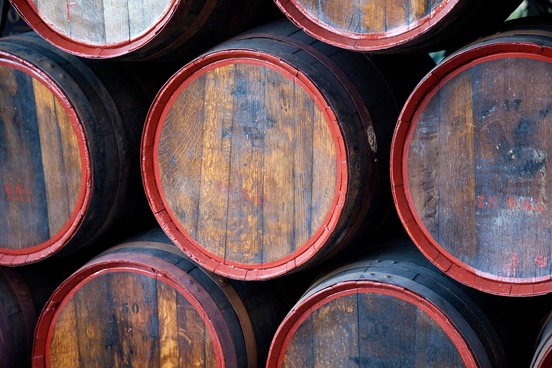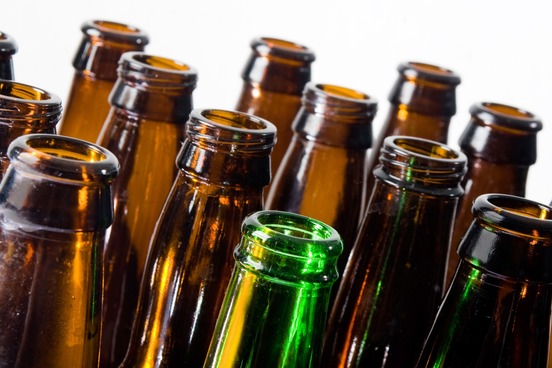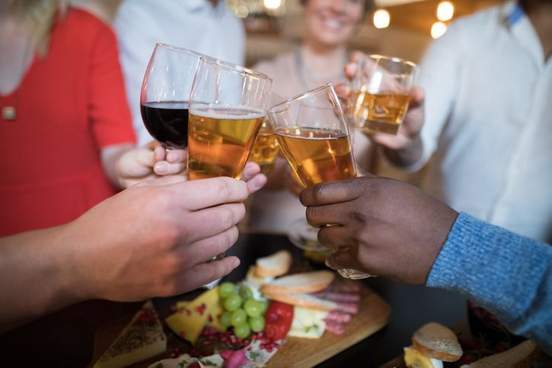The «F» word used in a special on binge drinking plus violence on the movie Black Hawk Down get TEN into trouble.
-
Published by
David Knox -
on
August 6, 2009
-
Filed under
News

The Australian Communications and Media Authority has found The Truth About Binge Drinking hosted by former Liberty X singer Michelle Heaton (pictured) last September contained an audible use of the word “F***ed.”
TEN acknowledged it was inadvertently left in the program during the editing process. ACMA found TEN also failed to respond to a written complaint within 30 days.
ACMA also ruled that the movie Black Hawk Down last October contained high impact violence. greater than that permitted with an M classification.
“The accurate classification of programs is a critical element in informing viewers’ decisions about what they and their children watch. It is vital that licensees correctly classify programs,” said Chris Chapman, ACMA Chariman. “Licensees must fulfil their complaint handling obligations under the code.”
TEN has since advised that Black Hawk Down will be edited and/or reclassified to comply with the code. In relation to the Binge special it has also reviewed its editing processes to ensure all edits requested by its classifiers occur.
ACMA says it is satisfied that TEN has addressed ‘weak compliance procedures’ but would consider stronger action should another breach occur.
It neglected to address why TEN had the apparently weak procedures in the first place, or if there are any others currently in place that we”ll learn about in another twelve months….
Source: ACMA
-
Tagged with
The Truth about Binge Drinking
19 Responses
-
Johnny, um, what? The commercial stations can and do have the f-word in shows at 8:30 if they want to. Seven did just last night with Double Take’s Goodfellas parody. And there are many other examples on the other networks.
-
@ Dr_Rudi
I said it is about time the Commercial Stations were allowed the same liberties ABC and SBS have to screen shows, not have separate charters, my post was about why stations are reluctant to pick up some shows (as has been said on this very site in various replies) because this is what happens to TEN and the others.
For instance there is no way The Librarian would be allowed to screen at 9pm on a Commercial Station (there were more F Words in that than The Truth About Binge Drinking), broadcast standards should apply across the board (I understand narrow casts like Pay TV being different). I am fully aware that it is a Charter that the ABC and SBS work off (the same charter that people are arguing now over with SBS not meeting it with Adverts in between shows and other content), what I am saying is that I personally find it ludicrous that two standards exist for Broadcast Content.
As a business model the same standards and practices should apply to all not be different for each, why should 7,9,10 have to edit shows down (Dexter, Californication etc) to meet a different standard to ABC and SBS. People rue the lack of content like United States Of Tara on the Commercial Stations or there late showing timeslots, if they were to show such shows at similar times they would need to edit them to comply and then you get complaints for the Stations Editing.
SBS or the ABC could show lets say Dexter and Californication in the same timeslot as TEN do with out having to edit certain parts out and like I said earlier there is no way the episode of The Librarian that was on Weds Night at 9pm on ABC1 (and 8:30pm on ABC2), could have been shown on 7,9,10 at similar times.
-
As Kent Brockman would say, that oughta hold the little s-o-b-s… I refer of course to the looney christians who monitor this stuff for the slightest infraction. Then again, with ACMA minding the store, its not as if there will be any actual consequences.
-
Yet another job well done ACMA. 😛
Valid breaches on both counts, but I’ve never put much faith in TV classification standards anyway. And didn’t an episode of So You Think You Can Dance contain a stream of “F words” as well?
-
Trivial!
-
@Jack: What do you mean by “a sign of how far we’ve come”? Is your vision of the future as a place where you can swear your head off at who you like without consequences? A future of Equal rights for swear words? (haha good one Paull.. gotta put that in the 2010 joke book)
-
Sigh, I noticed the f-word in that program and was happy thinking how far we’d come. I even mentioned it on this site once.
-
Look. Another wet bus ticket. Thanks ACMA.
-
Don’t re-edit the film, what gits!!!
-
@ Johnny 1.5 – mate, you have no idea. As national broadcasters, the Australian Broadcasting Corporation (ABC) and the Special Broadcasting Services (SBS) each has its own Act of Parliament and Charter. Both the ABC and SBS have codes of practice developed under the legislation. The ACMA performs an independent adjudicator role where complaints under either code of practice are not resolved between a complainant and a national broadcaster.
So, you’d like an act of parliament for each broadcaster in the country?
Secondly, you might find that the non-commercial viewer is better educated, more progressive, and therefore less likely to complain about trivial matters.
-
That’s F**ked…
-
While I think of it – what was Nine doing the other night on 20 to 01 – the program was in the 7.30 hour and it contained one of the grossest and most objectionable scenes I have ever witnessed – from that Monty Python movie where the fat dude eats too much and explodes – that scenes may be funny but it borders on horror and shouldn’t be in a 7.30 slot.
-
Johnny 1.5 – You are correct sir!
The commercial nets get raked over the coals for the kind of material that is commonplace on the two government broadcasters
-
Ryan, yeah, there are people that watch with pen and paper in hand, ready to complain every time they see the slightest breach. They’re called Christian Fundamentalists, and they’ve never forgiven Ten for Californication.
I doubt there is anyone watching in a PG timeslot – especially a show about binge drinking – that would be offended by the “F word”. Except the religious nutters with nothing better to do.
-
it seems TEN have been having alot of problems correctly classifying its programs.
I know! Who’d waste their time writing a letter to complain about one word out of the thousands of words that are heard in an hour of television. And for a person to be watching a program about binge drinking to complain about a swear word, who wouldve thought.
As for black hawk down, not that definetly should not have been given an M classification. And to try and edit out any ‘high impact violence’ would ruin the movie. The blowing up and shooting is what the whole movie is about! -
This is why stations like TEN are reluctant to pick up shows like United States Of Tara or if they do they relegate them to the late hours, meanwhile SBS can show Skins, Oz, Mad Men, Big Love and etc unedited and not get a complaint (or at least one that will stick), I think it is about time that the Commercial Networks got the same liberties that SBS and the ABC get (I think the ABC does anyway, like how on the radio JJJ can play unedited songs that the commercial stations cannot, I am sure it applies to ABC TV as well for TV Shows).
-
last year!, so it’s taken them at least 8 mths to come to the conclusion that an f word does not belong in a pg programme, i could i figured that seconds after hearing it.
-
ACMA, I generally find that having a governing body for an industry such as yours is to make sure things like this don’t happen.
Either way, at least it was just a swear word and not copious amounts of sex scenes?
-
OMG pick on TEN month LOL! So with all the breaches exactly what has the AMCA done about anything?!? A whole lot of nothing!
I can’t believe there are people that ring and complain about this sh!t do they have nothing better to do; seriously might just be me but I couldn’t be bothered about what was screen on tv in which timeslot.
Leave a Reply
You must be logged in to post a comment.
Related Posts
Search
Alcohol and drinking words can be confusing. What’s the difference between whisky and whiskey? Between a generic and a semi-generic wine? Or between beer and ale? Once you know the differences, see if your friends do. It’s fun!
A|B|C|D|E|F|G|H|I|J|K|L|M|N|O|P|Q|R|S|T|U|V|W|X|Y|Z
- Absinthe is a spirit drink of aromatics including star anise, fennel seed, and wormwood leaves. It is green in color but turns white with the addition of water.
- ABV (Alcohol by Volume ). The proportion of the volume of alcohol per volume of beverage. It’s always higher than alcohol by weight.
- ABW (Alcohol by Weight ). The proportion of alcohol weight per weight of beverage. It’s always lower than alcohol by volume.
- Ades are tall warm-weather drinks consisting of sweetened lemon or lime juice and distilled spirits, garnished with fruit. They may also include plain or soda water.
- Alcohol refers to ethyl alcohol or ethanol, the type found in alcohol beverages. Many people use it to refer to alcohol beverage in general. In fact, the word alcohol is from the Arabic “al kohl,” meaning the essence.
Equivalence of Alcohol
Alcohol equivalence refers to a simple fact. It’s that standard servings of beer, dinner wine, and distilled spirits all contain the same amount of alcohol. Specifically, 0.06 ounce of pure alcohol. They’re all equal alcohol-wise. Therefore to a breathalyzer, they’re all the same.
- Alcohol monopoly prohibits the sale of alcohol beverages by anyone other than the state or a state agency. That is, either all forms or specific forms, such as beer, wine, or spirits. As a result it does not operate to the advantage of the consumer. Specifically, it results in poor selection, higher prices, and often poor service. That is because it eliminates competition.
Ale
- Ale is a style of beer made with a top-fermenting yeast. Ales are typically hearty, robust and fruity. (See also beer.)
- Amaretto is a liqueur with a slightly bitter almond flavor, made from apricot pits.
- Amontillado (ah-mon-tee-yah-doh) is a nutty dry sherry from Spain.
- Anisette (ahn-i-set) is a fragrant liqueur with a licorice flavor.
- Anjou (ahn-zhew) a white wine from the Loire Valley of France.
Anstie’s Limit
- Anstie’s limit is the amount of alcohol that Dr. Francis E. Anstie (1833-1874) found people could drink daily with no ill effects. It is 1.5 ounces of pure ethanol, equivalent to two and one-half standard drinks of beer, wine or distilled spirits. Today, we know that moderate alcohol consumption promotes better health and greater longevity than is either abstention or heavy drinking.
- Aperitif (ah-pair-ee-teef) is an alcohol beverage that typically has the flavors of herbals such as fruits, seeds, flowers or herbs.
- Appelation contrôlleé refers to the French system to regulate the variety of grapes, quantity grown, and geographic origin of wines. They bear a specific place name, such as Champagne or Chablis.
Abstaining from alcoholic beverages is a health risk factor. That is, it increases the chances of poor health and shorter life.
Applejack
- Applejack is a sweet apple-flavored brandy.
- Aqua vitae or “water of life” is the original name spirits. They were originally for medicinal and health purposes. Scientific medical research shows that the moderate use of spirits and other alcohol beverage is healthful. Alcohol causes better health and longer life than either abstinence or heavy drinking.
- Argmanac is a grape brandy from the Gers district of Southern France.
A|B|C|D|E|F|G|H|I|J|K|L|M|N|O|P|Q|R|S|T|U|V|W|X|Y|Z
B (Alcohol & Drinking Words)
- Bacchus (bock-us) is the mythological god who spread wine culture throughout Europe.
- Back. A back is something a person drinks along with a straight spirit. Backs are commonly soda or water.
- Balthazar is a large bottle holding 12 liters or the equivalent of 16 standard wine bottles.
- Barbera (bar-bear-ah) is a red grape common in the Piedmont region of Italy. However, it’s grown around the world.
- Barbados rum is a rum from the island of Barbados. It has a smoky flavor.
- Barkeep is another word for bartender. Visit Minimum Age for Bartending by State.
All vitamins and minerals necessary for good health are in alcoholic beverages.
Barrel
- Barrel is a standard unit of volume. A US barrel is 31.5 gallons. On the other hand, a British barrel is larger at 43.2 gallons.
- Barrel proof means that the producer didn’t dilute the spirit after removing it from the cask or barrel. Thus, it has a higher proof than the traditional spirit.
- Barsac (bar-sack) is a dessert wine from the Sauternes region of France.
- Beaujolais (bo-jo-lay) is a light, fruity red wine from the Beaujolais region of France.
- Beaujolais nouveau (bo-jo-lay noo-vo) is a light red wine from the Beaujolais region of France. It appears after a few weeks of fermentation.
- Beer is a fermented beverage from barley malt or other cereal grains. From the Latin dibere (to drink). Lager beer is a light, dry beer. Ale is heavier and more bitter than lager. Bock beer, porter and stout are progressively heavier, darker, richer and sweeter.
- Belgian lace refers to the white pattern of foam from the head of beer that appears on a glass.
Binge
- Binge drinking clinically refers to drinking in which the binger is continuously intoxicated for a period of at least two days. During that time the binger fails to do usual life activities. These may include going to work, meeting family responsibilities, etc. In recent years some activists use the term to refer to the consumption of low numbers of drinks. Such a misuse of the term greatly increases the number of individuals in the category of bingers. Thus, it’s misleading and deceptive.
- Bitters is a type of aperitif or cordial with a bitter taste for flavoring drinks.
- Blanc (blahn) is French for white, as in Chenin Blanc, which is a white grape variety.
Blind Pig
Blind pig is another name for a speakeasy (also see speakeasy). Perhaps called a blind pig because the establishment turned a “blind eye” to Prohibition. Or because consuming the often illegal alcohol beverages sold there sometimes caused blindness.
- Blind tasting is tasting without knowing certain facts about the beverage. This reduces bias. Also known as single blind tasting. (See double blind tasting.)
- Blue laws regulate both public and private conduct on the Sabbath. Historically, they made illegal such things as shaving, dancing, singing, traveling, cooking, working and engaging in commerce. Today blue laws commonly prohibit the purchase of alcohol beverages on Sundays or Sunday mornings in an effort to promote church attendance.
- Blush wine is a rosé wine.
The Puritans brought more beer than water onboard the Mayflower.
Bock
- Bock is a very strong lager beer traditionally for celebrating the approach of spring. Bocks are typically full-bodied and malty. (See also beer.)
- Bodega is a Spanish wine cellar. Also refers to a seller of alcohol beverages.
- Bomber is a 22-ounce bottle of beer.
- Bordeaux (bore-doe) is a large wine growing region in southwestern France. Includes the areas of Medoc (meh-doc), Pomerol (paw-meh-rawl), St.Emilion (sant eh-mee-lyon) and Sauternes (saw-tairn).
- Botrytis Cinerea. (See noble rot.)
Bottled-in-bond
- Bottled-in-bond whiskey is straight whiskey produced under US government supervision for tax purposes.
Bottled in Bond stamp - Bottom fermentation occurs when saccharomyces carlsbergensis (“lager yeast”) causes fermentation. This strain of yeast settles to the bottom of a tank during fermentation. See top fermentation.
- Bottoms up is an expression some people say before drinking an alcoholic beverage.
- Bouncer is a security guard at a bar. Visit Be a Bouncer? Essential Facts.
By act of Congress, bourbon is the official spirit of the U.S.
Bourbon
- Bourbon is a beverage that distillers make from a mash of at least 51% corn and they age it in new charred oak barrels. Baptist minister Elijah Craig in Bourbon County, Kentucky, first made it.
- Brand name means proprietary name. The term came from the practice among American distillers of branding their names and emblems on their kegs before shipment. (Branding is burning something into the wood.)
Brandy
- Brandy is a beverage that distillers make from wine or fermented fruit mash. The word is from the Dutch brandewijn, meaning burnt wine.
- Brief intervention is a technique to help individuals either abstain or reduce their use of alcohol. It can be very effective.
- Brown ale is a British-style, top-fermented beer that is lightly hopped and flavored with roasted and caramel malt.
Brut
- Brut (brute) refers to dry Champagne. It means brutally dry.
- Burgundy is a wine district in France. It generically refers to other wines that resemble those produced in Burgundy.”
A|B|C|D|E|F|G|H|I|J|K|L|M|N|O|P|Q|R|S|T|U|V|W|X|Y|Z
C (Alcohol & Drinking Words)
- Cabernet Sauvignon (cab-air-nay so-vee-n´yohn) is the most important red grape variety in the world.
- Call Drink. When a customer orders a drink giving the brand names of both spirit and mixer. For example, Bacardi and Pepsi.
- Calvados (col-va-dose) is apple brandy from cider in the town of the same name in northern France.
- Canadian whiskey is a blend of straight whiskeys (usually rye corn and barley) made only in Canada under government supervision.
- Capsule is the foil that covers the cork and part of the neck of a wine bottle.
- Cask strength is the same as barrel proof.
Cassis
- Cassis (kah-seece) is a purple liqueur from currants.
- Chablis (shah-blee) is a dry white wine from Chardonnay grapes in the Chablis region of France. It also generically refers to other wines that resemble the wine produced in Chablis.
Champagne
The French didn’t invent sparkling wine. The English did. Learn more at Wine Trivia.
- Champagne is an effervescent wine from the Champagne region of France. It’s generally a blende from several different years and from as many as 40 different wines. Occasionally a vintage is of such a superior quality that a vintage Champagne is produced. Sparkling wines from other areas of the world are sometimes generically labeled champagne. However, increasingly producers elsewhere are now labeling such wine “sparkling wine.”
Châteauneuf-du-Pape
- Châteauneuf-du-Pape (shah-toe-nuff doo pahp) or “new castle of the Pope” is a village in the Rhone valley of France. Its red wines are from Grenache and Syrah grapes.
- Chardonnay (shar-doh-nay) is a white grape variety that is widely planted around the world and can produce fine wine.
Charmat method - Charmat or bulk fermented sparkling wines receive a second fermentation in large tanks. Compare with Methode Champenoise.
- Chaser is something a person drinks after a shot of straight spirits.
- Chenin Blanc (sheh-nan blahn) is a versatile white grape variety widely grown in California and South Africa.
- Cherry brandy. Distillers make cherry brandy (German name, kirchwasser) from — surprise! — cherries.
Chianti
- Chianti (k’yahn-tee) is a wine from the Tuscany region of Italy.
- Cider refers to unfermented apple juice in the US but to fermented apple juice in the rest of the world. In the US, fermented apple juice is called hard cider.
Cobblers Claret is a dry red wine from the Bordeaux region of France.
- Cobblers are tall drinks consisting of shaved ice, fruit and distilled spirits decorated with berries, fruit or mint.
- Coffee brandy is a coffee-flavored brandy distilled from coffee beans.
- Cointreau (kwan-troh) is a liqueur with orange and lemon flavors.
- Column distilling is a newer and more efficient way to distill alcohol. Distillers pump the mash continuously into a column. Steam rises and evaporates the alcohol. Distillers can continue the process repeatedly. This results in a higher proof and more nearly pure alcohol. Also see pot distilling.
Fermentation within the body is essential for human life. We all produce alcohol 24/7. Even those under 21!
Congeners
- Congeners (khan-gen-ers) are taste and flavor elements in alcohol beverages.
- Cognac (cone-yack). Distillers make this brandy from wine in the Cognac region of France. Thus, all cognac is brandy but not all brandy is cognac.
- Cold duck is a mixture of red and white sparkling wine that has a high sugar content.
Cooler
- Cooler is a beverage with a base of beer, wine or spirits with ingredients such as fruit or cocktail flavor
- Cordial is liqueur made in the US.
- Corkage fee is charged by most restaurants when customers bring their own bottle.
- Corn whiskey is a spirit distillers make from a mash of at least 80% corn.
- Cream ale is a blend of top- and bottom-fermented beers. It is typically sweet and little hopping.
The “Star-Spangled Banner” was written to the tune of a drinking song.
Crèmes
- Crèmes are extra sweet liqueurs of thick consistency. They tend to be syrupy.
- Crème de banana is a sweet, banana-flavored liqueur.
cacao (ka-cow-oh) is a sweet, chocolate-flavored liqueur.
cassis (kah-seece) is a sweet, black currant-flavored liqueur.
framboise is French for raspberry liqueur.
kirsch is a sweet, black cherry-flavored liqueur.
menthe is a sweet, mint-flavored liqueur.
noya is a sweet almond-flavored liqueur.
violette is a sweet liqueur flavored with violet oil and vanilla.
Cru
- Cru is the grape production from a French vineyard.
A crusta with a crusta. Crusta is the sugared rim of a glass. Originally, the crusta was a 19th century drink. It was a spirit (usually brandy) with a large lemon peel garnish and a sugar-rim edge.
- Cups are wine cocktails with brandy and triple sec along with sweet wine, dry sparkling wine or cider.
- Curacao is a cordial with the flavor of sour orange peel.
- Curaçao (kyoor-uh-sow) is a cordial with sour orange peel flavor.
- Cuvee (cue-vay) is a large vat for fermentation.
- Cynar (chee-nahr) is an Italian liqueur with artichoke flavor.
A|B|C|D|E|F|G|H|I|J|K|L|M|N|O|P|Q|R|S|T|U|V|W|X|Y|Z
D (Alcohol & Drinking Words)
- Daisies are cocktails of spirits, a cordial and lemon or lime juice. They are usually shaken with cracked ice, served over an ice cube and decorated with fruit.
- Dash. A dash is a few drops or a very small amount of an ingredient.
- Dégorgement (day-gorj-mahn) is the disgorging or removal from bottles of sediment that results from a secondary fermentation. Remuage causes the sediment to settle in the neck of bottles where it is frozen and popped out. (See also remuage.)
Demi
- Demi is a split or half bottle. It has 375 ml.
- Demi-sec is moderately sweet to medium sweet sparking wines.
- Designated driver is a person who does not drink at an event and drives others home. The use of designated drivers is widespread and has resulted in saving thousands of lives.
Digestif
- Digestif is French for liqueur.
- Dirty describes a drink (often a martini) to which the bartender has added some olive brine.
- Distillation is the process distillers use to separate alcohol from water. Alcohol evaporates at a lower temperature than water. Therefore, it evaporates first and then distillers condense it back into liquid form.
George Washington was his country’s first large distiller. Learn more by taking the George Washington Quiz. You’ll discover things you never learned in school!
- Distilled spirits refers to ethanol that is produced by heating fermented products, such as wine or mash, and then condensing the resulting vapors. Sometimes referred to as liquor or hard liquor. The term hard liquor is misleading in that it implies that the product is more intoxicating or potent than beer or wine. In reality, a bottle or can of beer, a five-ounce glass of dinner wine, and a shot of distilled spirits (gin, vodka, etc.) each contains an equivalent amount of alcohol.
When first made, distilled spirits are completely clear with no color. They get their colors and hues from the aging process in oak barrels.
DO
- DO is the abbreviation for Denominacion de Origen, or “place name.” This is Spain’s designation for wines whose name, origin of grapes, grape varieties and other important factors are regulated by law.
- DOC is the abbreviation for Denominazione di Origine Controllata, or “controlled place name.” This is Italy’s designation for wine whose name, origin of grapes, grape varieties and other important factors are regulated by law. It is also the abbreviation for Portugal’s highest wine category, which has the same meaning in that country.
DOCG
- DOCG is the abbreviation for Denominazione di Origine Controllata e Guarantita, or controlled and guaranteed place name, which is the category for the highest-ranking wine in Italy. Also see DOC.
Double blind tasting Double blind tasting is tasting without knowing any facts about the beverage. That is, other than what’s in the glass. This eliminates bias. Also see blind tasting.
- Doux (doo) is the French word for sweet. Usually refers to the sweetest category of sparking wines.
- Down the hatch is an expression some people say before drinking an alcoholic beverage.
- Dram shops are establishments licensed to sell alcohol beverages by the drink. (See package store)
- Draught beer is keg beer served on tap. Sometimes called draft beer, which is the way it is pronounced.
- Dry refers to the absence of sugar or sweetness in a beverage.
- Dublin stout is a very bitter and very dark style of beer.
A|B|C|D|E|F|G|H|I|J|K|L|M|N|O|P|Q|R|S|T|U|V|W|X|Y|Z
E (Alcohol & Drinking Words)
- Eau de Vie (Oh da vee) is any beverage distillers make from fruits.
- Eggnog is a beverage of milk, whole eggs, and nutmeg.
- Eiswein (ice-vine) is wine made from frozen grapes (German). Same as ice wine.
- Enophile. People who love wine are enophiles.
- Enology (or oenology) is the science and art of wine making. Also called viniculture.
- Ethanol is the form of alcohol in alcoholic beverages.
- Estate-bottled. A wine maker owns the vineyard or has a long-term lease to buy its grapes.
- Extra dry, when referring to sparking wines, actually means sweet.
A|B|C|D|E|F|G|H|I|J|K|L|M|N|O|P|Q|R|S|T|U|V|W|X|Y|Z
F (Alcohol & Drinking Words)
Chiante in a fiasco. Fermentation is the process during which yeast converts sugar into alcohol and carbon dioxide.
- Fiasco is the bulbous bottle with woven straw typical of Chianti wine.
- Finish is the lingering aftertaste that results after an alcohol beverage is swallowed.
- Fizzes are mixed drinks of distilled spirits, citrus juices, and sugar shaken with ice. “Fizz” (soda water) or other carbonated beverage is then added.
Flips
- Flips are made with a distilled spirit, egg and sugar, which is shaken with cracked ice and strained into a glass.
- Fortified wine is wine to which alcohol has been added to increase the proof to a higher level than the maximum possible from fermentation.
- Foxy refers to a musty odor and flavor common to wine made from grapes of the vitis labrusca breed of grapes native to North America. It is caused by the methyl anthranilate common to vitis labrusca grape varieties such as Concord, Delaware, Catawba and Niagara.
Frappé Frappé (fra-pay) is a liqueur over crushed ice.
- French Colombard is a white grape variety widely grown in California. It is typically blended with other white wines.
A|B|C|D|E|F|G|H|I|J|K|L|M|N|O|P|Q|R|S|T|U|V|W|X|Y|Z
G (Alcohol & Drinking Words)
- Galliano is an Italian liqueur with the flavor of herbs.
- Gamay is a red grape variety well known for its use in making France’s Beaujolais wines.Gamay Beaujolais is a red grape variety grown in California.
- Garnish. Bartenders may add a garnish to a drink to enhance it. Garnishes are often slices of lemon or lime, cherries, olives and twists Some garnishes only add to appearance. However, others enhance flavor.
- Generic wine refers to wines that are believed to resemble those traditionally produces in specific regions of Europe, such as Burgundy, Champaigne, Chablis, and Sherry. Generics are generally blends of common grape varieties. The better varieties are usually produced as varietal wines. [See also: varietal wine.] [See also: semi-generic.]
- Genever. [See also: Hollands gin.]
Gewurztraminer
- Gewurztraminer (geh-vurtz-tra-mee-ner) a pink grape variety used to make a distinctively spicy-flavor white wine.
- Gill is equivalent to five ounces. British soldiers used to be guaranteed a ration of two gills of gin or rum each day.
Gin
Juniper berries Gin is distilled spirits flavored with juniper berries. It may also include additional flavorings. Although gins may be aged, producers of those sold in the US are prohibited from reporting that they have been aged or, if so, for how long they have been aged
- Grand Marnier (GRAHN mar-NYAY) is an an orange liqueur.
Grappa
- Grappa is Italian brandy from pomace, which refers to the seeds and skins that remain after wine making.
- Grenache is a red grape variety common in the Rhone Valley region of France.
- Grinadine is a non-alcoholic syrup from a variety of fruits. People use it to flavor alcoholic drinks.
- Grog is rum and water. It’s also an early English name for Caribbean rum.
- Growler is a container to carry draught beer. They usually hold ½ gal (64 oz) or 2L (68 oz).
A|B|C|D|E|F|G|H|I|J|K|L|M|N|O|P|Q|R|S|T|U|V|W|X|Y|Z
H (Alcohol & Drinking Words)
- Half bottle (demi or split) has 375ml.
- Hangover is the unpleasant consequence of over-consuming alcohol. It typically includes headache, fatigue and often nausea. We can prevent it by not over-drinking.
- Happy hour is a period of time when drinks at a bar cost less than usual. It’s usually in the early evening.
Highballs
- Highballs can be almost any spirit, ice, and any of a number of effervescent beverages.
- Hogshead usually refers to a 60-gallon oak barrel.
- Hollands gin (Genever) is from grain spirits. It’s a heavy aromatic beverage.
The oldest known recipe in the world is for beer.
Hops
- Hops is the small flower of a vine (humulus lupulus). Some varieties contribute mainly bitterness to brews, while others contribute aromas. Hops was originally used to preserve beer.
- Horizontal tasting is tasting the same type of wines from different producers of the same vintage. (See vertical tasting.)
- Hot toddy. The bartender sweetens liquor and hot water, often with spices.
A|B|C|D|E|F|G|H|I|J|K|L|M|N|O|P|Q|R|S|T|U|V|W|X|Y|Z
I (Alcohol & Drinking Words)
Ice wine Ice wine is made from frozen grapes. Same as eiswein (German).
- Ignition interlock is a device that requires a person to blow into a breathalyzer before starting the engine of a vehicle. If the breathalyzer detects no alcohol, the driver can start the engine.
Imperial Stout
- Imperial stout is a very strong, dark, fruity beer [See also: beer.]
- India pale ale was originally an ale brewed in England for British troops stationed in India during the 1700s. It was brewed very strong to survive a voyage that could last as long as six months and was highly hopped to help preserve it.
Irish coffee Irish coffee is coffee with a dash of whiskey and whipped cream on top. It’s a very popular beverage.
- Irish Mist is an Irish liqueur with heather, honey, and herbs.
- Irish whisky. Distillers triple distill and blend grain spirits from Ireland.
A|B|C|D|E|F|G|H|I|J|K|L|M|N|O|P|Q|R|S|T|U|V|W|X|Y|Z
J (Alcohol & Drinking Words)
- Jamaican rums are medium heavy-bodied rums produced in Jamaica.
- Jeroboam is a large bottle holding three liters.
- Jigger is a container for measuring liquids when making mixed drinks.
- Judgment of Paris. In 1976, French wine experts double blind tasted major French and virtually unknown American wines. They judged the best red and white wines to those from California. This monumental event proved that vintners could make great wines in the U.S. and elsewhere. Discover more at The Historic Paris Wine Tasting.
Juleps are traditionally made from Kentucky bourbon and fresh mint leaves. However, they can be made with gin, rye, brandy, brandy, rum, or champagne.
A|B|C|D|E|F|G|H|I|J|K|L|M|N|O|P|Q|R|S|T|U|V|W|X|Y|Z
K (Alcohol & Drinking Words)
- Kaoliang is a beverage distillers make from sorghum cane.
- Keg is a metal container used to store, transport and serve beer under pressure. Often described by the portion of a barrel they hold.
- Kentucky whiskey is a blend of whiskeys distilled in Kentucky.
- Kir is a cocktail of crème de cassis with white wine.
- Kirchwasser. (See cherry brandy.)
- Kosher wines are those produced under the supervision of a rabbi so as to be ritually pure or clean. Although commonly sweet, they need not be so.
- Kummel is a sweet liqueur with caraway seed flavor.
A|B|C|D|E|F|G|H|I|J|K|L|M|N|O|P|Q|R|S|T|U|V|W|X|Y|Z
L (Alcohol & Drinking Words)
- Lager is a beer style made with bottom fermented yeast and is generally smooth and crisp. [See also: beer.]
- Legal drinking age refers to the minimum age at which people may legally consume alcoholic drinks. It is distinct from legal purchase age, which is the minimum age at which a person may legally buy alcoholic beverages.
- Last call is when the bar is about to close, and customers can order their last drink.
- Legal purchase age. (See legal drinking age.)
Legs
Are these good legs? Legs are the streams of liquid that cling to the sides of a glass after swirling the contents. Many people consider this to be an indicator of quality. However, there is little evidence to support this belief. Also called tears.
- Liebfraumilch (leeb-frow-milsh) or “milk of the virgin” is a white German wine.
- Light beer is lower-calorie beer. Brewers remove dextrine, a tasteless carbohydrate. Although beer, wine and spirits all contain calories, their consumption does not appear to increase weight!
Liqueur
- Liqueur (li-cure) is a sugared and flavored distilled spirit.
- Liquor historically was any alcohol beverage. However today it generally refers only to spirits. Brewers also use it to refer to the water they use in producing beer.
- Mixed drinks are spirits and another beverage, like soda or juice.
- Liter is a measure of volume equal to 33.8 ounces.
- Loire (l’war) is a region of France that includes the areas of Anjou (ahn-zhew), Touraine, Vouvray (voo-vray), Pouilly-Fume (poo-yee-fume-aye) and Sancerre (san-sair).
- London dry gin is an unsweetened gin.
A|B|C|D|E|F|G|H|I|J|K|L|M|N|O|P|Q|R|S|T|U|V|W|X|Y|Z
M (Alcohol & Drinking Words)
- Maceration is the process of placing crushed fruit into distilled spirits for a period of time in order to impart the flavor of the fruit.
- MADD (Mothers Against Drunk Driving) strongly and actively opposes any driving after the consumption of any alcohol.
- Madeira (muh-deh-rah) is a dessert wine from the Portuguese island of Madeira.
Magnum
Many bars often free non-alcoholic drinks to designated drivers. Just ask.
- Magnum is a bottle holding 1.5 liters or the equivalent of two regular bottles.
- Malolactic fermentation is a secondary fermentation in wines during which malic acid becomes lactic acid.
- Malt (or malted barley) is barley that has been moistened, allowed to germinate, then dried. Not to be confused with malt liquor.
- Malt beverages are brewed from grain which has been permitted to sprout and then dried. Such grain is called malt and contains much more sugar than un-malted grain.
Malt liquor
- Malt liquor is not liquor or spirit of any kind. It is a beer with higher alcohol content and often a sweeter taste than most other beers. (Also see liquor.)
- Maraschino cherries are tart cherries from Dalmatia. They garnish some drinks.
- Maraschino liqueur is a cordial. Distillers make it from a bitter wild cherry (marasca).
Mash
- Mash is ground malt (germinated barley) and water.
- May wine is light German wine. It has the flavor of sweet woodruff along with strawberry or other fruit.
- Mead is a beverage from the fermentation of honey and water.
- Médoc (meh-doc) is a region of France that includes the villages of Margaux (mar-go), Saint-Julien (san-jew-lee-en), Pauillac (po-yack), and Saint Estephe. (Also see Bordeaux.)
Merlot
- Merlot (mair-lo) is a red grape variety that can produce fine wine.
- Mescal. Distillers make it from the dumpling cactus plant in Mexico.
- Méthode Champenoise (may-tud sham-pah-n’wahz) sparkling wines receive a second fermentation in the same bottle that will go to a retail buyer. Compare with Charmat or bulk fermented.
Methuselah
- Methuselah is a large bottle holding six liters or the equivalent of eight regular bottles.
- MI is the abbreviation for milliliter, or onethousandth of a liter.
- Midi (mee-dee) is a large region in the south of France that produces an abundance of ordinary wines.
- Minimum drinking age or legal drinking age. [See also: legal drinking age.]
- Minimum purchase age or legal purchase age. [See also: legal drinking age.]
- Mis en boutielle au château (meez ahn bootay oh shah-toe) is French for “bottled at the winery,” usually in Bordeaux.
Mist
- Mist is any drink in which the spirit is over ice.
- Mixed drinks are made with spirits and other beverage, like soda or juice.
- Mocktail is a non-alcohol drink that otherwise resembles a cocktail or other alcohol beverage.
- Moonshine is illegal spirit that escapes taxation. It is profitable to produce this often dangerous product because legal spirits cary very high taxes.
- Mountain dew is another name for moonshine. [See also: moonshine.]
- Muddler is a bartending tool for crushing drink ingredients.
- Mull is a sugared and spiced hot drink made from a base of beer, wine or distilled spirits.
- Muscat Blanc is grape of the Muscat family that produces sweet floral wines.
A|B|C|D|E|F|G|H|I|J|K|L|M|N|O|P|Q|R|S|T|U|V|W|X|Y|Z
N (Alcohol & Drinking Words)
- Neat refers to serving an unmixed , non-iced distilled spirit in a shot glass.
- Nebbiolo is a red grape variety in the Piedmont region of Italy.
- Nebuchadnezzar is a large bottle holding 15 liters or the contents of 20 standard bottles.
- Négociant (nay-go-syahn) is French for a wholesale wine merchant, blender and shipper.
Neutral spirit
- Neutral spirit refers to ethyl alcohol of 190 proof or higher than has no taste of the grains or fruits from its production.
Example of Noble Rot Noble rot is another name for the botrytis cinerea (bo-trie-tiss sin-eh-ray-ah) mold that can pierce grape skins causing dehydration. The resulting grapes produce highly prized sweet wine.
- Nog or egg nog is a beverage of eggs and milk or cream, traditionally of rum or brandy. However, some people use whiskey, sherry, ale or cider. The name may have come from “noggin,” a small drinking vessel or from joining the sounds of “egg ‘n grog.” [See also: grog.]
A|B|C|D|E|F|G|H|I|J|K|L|M|N|O|P|Q|R|S|T|U|V|W|X|Y|Z
O (Alcohol & Drinking Words)
- Oenology. [See also: enology.]
- Oktoberfest is an annual beer festival in Münich for 16 days and nights in late September and early October. Originated to celebrate a royal wedding in 1810.
- Oloroso is a type of sherry, which is usually dark and often sweet.
- On-the-rocks refers to serving a beverage poured over ice cubes.
- Ouzo (ooze-oh) is a brandy-based Greek liqueur with anise flavor.
A|B|C|D|E|F|G|H|I|J|K|L|M|N|O|P|Q|R|S|T|U|V|W|X|Y|Z
P (Alcohol & Drinking Words)
- Package store is another name in the US for liquor store. Package stores sell “package goods” because of laws requiring concealment of alcohol containers in public. Concealment is in paper bags or “packages.”
- Petite Sirah (puh-tee see-rah) is a red grape in California. Don’t confuse with Syrah.
Phylloxera - Phylloxera vatatrex is a microscopic underground insect that kills grape vines by attacking their roots. The insects destroyed virtually all of Europe’s vineyards in the last quarter of the 19th century. Therefore, today virtually all of Europe’s grape vines grow on the roots of American grape varieties that are resistant to the destructive insects.
Piccolo
- Piccolo is a 1/4 bottle of wine. That is, it has 187.5 ml.
- Pink gin is a cocktail of gin with a dash of bitters.
- Pinot Blanc (pee-no blahn) is a white grape.
- Pinot Gris (pee-no gree) is a grape of grayish-rose color that produces white wines.
- Pip. A pip is a grape seed.
- Pomace refers to the skins and seeds that remain after making wine.
- Pony. A pony or pony shot is one ounce.
Port
- Port is a fortified dessert wine from Oporto, Portugal.
- Porter is a very dark, top-fermented beer. [See also: beer.]
- Pouilly-Fuissé (poo-yee fwee-say) is a dry white wine from Pouilly-Sûr-Loire in southern Burgundy.
- Pouilly-Fumé (poo-yee fume-aye) is a white wine from the Loire valley of France.
Pousse café Pousse cafés (poose ka-fay) are sweet, colorful drinks consisting of cordials and liqueurs poured in succession so that one floats on another.
- Proof refers to the alcohol content of a beverage. In the US, proof represents twice the alcohol content as a percentage of volume. Thus, a 100 proof beverage is 50% alcohol by volume and a 150 proof beverage is 75% alcohol. In the Imperial system, proof, (or 100% proof), equals 57.06% ethanol by volume, or 48.24% by weight. Absolute or pure ethanol is 75.25 over proof, or 175.25 proof.
Early American colonialists made alcoholic beverages from things that were available. Among other things, they had carrots, tomatoes, onions, beets, celery, squash, corn silk, dandelions, and goldenrod.
Pub
- Pub is short for public house for drinking, as contrasted to a private house or club. (UK)
- Puff is a traditional afternoon drink. It’s equal parts of a spirit and milk, with club soda and ice.
- Pulque (puhl-kay) is Mexican cactus beer.
- Punch is a drink typically of citrus juices and two or more wines or spirits. Some people add effervescent beverages. Hot punches often use milk, eggs and cream as a bas
- Pousse cafés (poose ka-fays) are sweet drinks of cordials and liqueurs poured in succession so that one floats on another.
Proof
- Proof refers to the alcohol content of a beverage. In the U.S., proof represents twice the alcohol content as a percentage of volume. Thus, a 100 proof beverage is 50% alcohol by volume and a 150 proof beverage is 75% alcohol. In the Imperial system, proof, (or 100% proof), equals 57.06% ethanol by volume, or 48.24% by weight. Absolute or pure ethanol is 75.25 over proof, or 175.25 proof.
- Pub crawl. A pub crawl is going from bar to bar and having a drink in each.
Puff
- Puff is a traditional afternoon drink of equal parts of a spirit and milk, with club soda over ice.
- Punch is a drink mixture typically of citrus juices and two or more wines or spirits. Some people add effervescent beverages. Hot punches often use milk, eggs and cream as a base.
Punt. The indentation in the bottom of a wine bottle.
A|B|C|D|E|F|G|H|I|J|K|L|M|N|O|P|Q|R|S|T|U|V|W|X|Y|Z
Q (Alcohol & Drinking Words)
- Qualitätswein (kvah-lee-tayts-vine) is a designation of better quality German wines.
- Qualitätswein Bestimmter Anbaugebeite (kvah-lee-tayts-vine be-shtimter ahn-bough-ge-beet-eh) is a designation of better quality German wines from recognized viticultural areas. However, it is not the highest quality designation.
- Qualitätswein mit Pradikat (kvah-lee-tayts-vine mit pray-dee-kaht) is a designation of best quality German wines that must conform to specific requirements of origin and composition.
- Quinine (kwahy-nahyn) is a bitter substance from the bark of the Chilean cinchona tree. Producers add it to tonic water.
A|B|C|D|E|F|G|H|I|J|K|L|M|N|O|P|Q|R|S|T|U|V|W|X|Y|Z
R (Alcohol and Drinking Words)
- Raspberry liqueur is a raspberry-flavored cordial, often called crème de framboise.
- Rehoboam is a large bottle holding 4.5 liters or the equivalent of six regular bottles.
- Rémuage (ray-mew-ahje) is the process whereby bottles of sparkling wine are successively turned and gradually tilted upside down so that sediment settles into the necks of the bottles in preparation for degorgement. [See also: degorgement.]
- Reserve is a term some vintners use to identify their best wines. However, researchers report that the term is essentially useless.
Retsina
- Retsina (rhet-seen-uh) is wine with pine resin flavor and is a very popular beverage in Greece.
- Rice wine. [See: saké (saki).]
- Rock and rye is a liqueur originally from rye whiskey and rock candy.
- Root beer is a non-alcohol beverage.
- Rosé wines (ro-zay) are red wines which do not have long contact with the skins of the red grapes from which they ferment.
Early Colonial New England’s largest and most prosperous industry was producing rum.
- Ruby is a style of Port that is generally sweet.
- Rum is a beverage distillers make from fermented molasses.
- Rye whiskey is a spirit distillers make from a mash of at least 51% rye grain.
A|B|C|D|E|F|G|H|I|J|K|L|M|N|O|P|Q|R|S|T|U|V|W|X|Y|Z
S (Alcohol and Drinking Words)
- St. Emilion. [See: Bordeaux.]
- Saké – or saki – is a fermented drink made from rice that is very popular in Japan. Although commonly called rice wine, it is actually a beer.
- Salmanazar is a large bottle holding nine liters or the equivalent of 12 regular bottles.
- Sambuca is an Italian liqueur with licorice-flavor. m
- Sangarees are whiskey, gin, rum or brandy with port wine floating on top. Alternatively, they are wine, ale, porter or stout with nutmeg. Don’t confuse with sangria. [See also: sangria.]
Sangria
- Sangria is a tart punch of red wine along with orange, lemon and apricot juice plus sugar.
- Sauternes (saur-taire) is a French sweet wine from grapes that noble rot has infected. [See also: noble rot.]
- Schnapps (schnopps) is a spirit that distillers make from potatoes or grain. People call it schnapps in Scandinavian countries and Germany. They call it vodka elsewhere.
- Scotch whisky is a blend of whiskies that generally have been aging up to ten years (about four years on average). Its characteristic smoky flavor results from drying malt barley over peat fires.
- Semi-generic are wines of the US but also have names of other places. The Tax and Trade Bureau requires a US name of geographic origin. Examples would be New York Chablis, Napa Valley Burgundy or California Champagne.
Sherry
- Sherry is a fortified wine that has been subjected to controlled oxidation to produce a distinctive flavor.
- Shiraz (shee-raz) is the Australian name for the Syrah grape.
- Shooter is a mixed drink, straight up in a small glass. Drinkers swallow it in one gulp. Differs from neat because it includes a mixer.
- Single blind tasting. Drinkers know some information about the wines they’re tasting. Also see double blind tasting.
- Single malt Scotch whisky is unblended Scotch whisky. They vary substantially in characteristic depending on the mash from which distillers make them. However, they all have the unique smoky flavor of any Scotch whisky.
Sling
- Sling is a tall drink of lemon juice, sugar, spirits, and club soda.
- Sloe gin is not gin but a brandy-based cordial made from sloe berries (the fruit of blackthorn bushes).
- Smash is a short julep in a small glass.
- Sommelier (so-mel-yay) is French for wine waiter or server.
Sour Mash Whiskey
- Sour mash whiskey comes from a mash containing about 25% residue from a previous mash. This gives added character to the resulting whiskey.
- Sours are lemon juice, ice, sugar, and a distilled spirit.
- Sparkling wine is effervescent wine.
- Spätlese (schpate-lay-zuh) is German for “select.”
- Speakeasy was an establishment in which people could consume illegal alcohol beverages during national Prohibition in the US (1920-1933). Name derived from fact that people often had to whisper a code word or name through a slot in a locked door in order to get in. Sometimes called a blind pig.
Split
- Split is a bottle holding 375 milliliters or half the equivalent of a typical bottle holding 750 milliliters.
- Spumantes are effervescent wines from Italy; spumante means sparking in Italian.
- Still wine is any wine that is not effervescent.
- Stout is a very dark, heavy, top-fermented beer. [See also: beer.]
- Straight is unblended.
- Straight up or up is a chilled spirit or mixed drink without ice.
- Sulfites are naturally occurring compounds that prevents microbial growth. They appear on grapes, onions, garlic and many other growing plants.
Swizzles
- Swizzles are lime juice, sugar, a distilled spirit and bitters packed with shaved ice.
- Syrah (see-rah) is a red grape variety. It is especially important in the Rhone valley of France. Avoid confusing with with Petite Sirah.
- Sommelier (so-mel-yay) is responsible for wine and wine service in a restaurant.
- Spirit on spirit is a drink with only spirits. That is, with nothing else in it.
A|B|C|D|E|F|G|H|I|J|K|L|M|N|O|P|Q|R|S|T|U|V|W|X|Y|Z
T (Alcohol and Drinking Words)
- Tannin is a naturally-occurring astringic acid found in many alcohol beverages that imparts a slight dry “puckering” sensation in the mouth.
- Tears. [See: legs.]
- Teetotaler is a person who abstains from alcohol.
Tennessee Whiskey
- Tennessee whiskey complies with the regulations for making bourbon. However, distillers filter itthrough charcoal right after distillation. [See also: bourbon.]
There’s no worm in tequila. The so-called worm is in mezcal, which distillers make from a different plant. And the “worm” is a butterfly caterpillar.
- Tequila is distillate from the Agave tequilana or the Tequilana Weber agave plant in Mexico.
- Thief is a tubular instrument for removing a sample from a cask or barrel.
Toasting
- Toasting is drinking an alcohol beverage along with a statement wishing good health or other good fortune. It began in ancient Rome, when people would drop a piece of toast into the beverage.
Hot toddies Toddies consist of sugar water, a spirit, and either ice or hot water with clove, nutmeg, cinnamon, or lemon peel.
- Tonic is a tall drink of ice, a spirit and tonic water.
- Tonic water is a slightly bitter, carbonated beverage with quinine flavor.
Martha Washington enjoyed daily toddys. In the 1790s, “happy hour” began at 3:00 p.m. and cocktails continued until dinner.
- Top fermentation occurs when saccharomyces cerevisiae (“ale yeast”) do the fermentation. This strain of yeast rises to the top of a tank during fermentation. See bottom fermentation.
Tot
- Tot. A tot is a short shot. Therefore, it makes a less alcoholic drink. A bartender who serves a tot to a customer who doesn’t request it is cheating the drinker.
- Triple sec is is liqueur that distillers have distilled three times and added a fruit flavor. (Also see below.)
- Triple Sec is the brand name of a liqueur from Curasao with orange peel flavor. (Also see above.)
- Trokenbeerenauslese (traw-ken-bear-en-ouse-lay-zah) is a type of German wine of vine-dried grapes. Such grapes can be so rare that it can take a skilled picker a day to gather enough for just one bottle.
- Twist. The bartender uses a zester to peel some rind of a lemon. This produces a thin, long twist of peel.
A|B|C|D|E|F|G|H|I|J|K|L|M|N|O|P|Q|R|S|T|U|V|W|X|Y|Z
U (Alcohol and Drinking Words)
- Uisge beatha is Gaelic for whisky.
- Ulanda is a cocktail of dry gin, triple sec and absenthe.
- Ullage is the empty space in a cask or barrel.
- Union Jack is a cocktail containing sloe gin, dry gin and grenadine.
- Up is the same as straight up. Up also refers to a drink in a stemmed glass.
A|B|C|D|E|F|G|H|I|J|K|L|M|N|O|P|Q|R|S|T|U|V|W|X|Y|Z
V (Alcohol and Drinking Words)
- Van der Hum is a South African liqueur with tangerine flavor.
- Varietal wine refers to a wine that is primarily from one variety of grape. In the US, at least 75% of the wine in the bottle must ome from one variety for the bottle to carry the name of that variety. Therefore, in order to carry the label Cabernet Sauvignon, at least 75% of the wine in the bottle must come from Cabernet Sauvignon grapes.
Vermouth
- Vermouth is a wine including as many as 40 flavorful aromatics.
- Vertical tasting is tasting the same type of wine from the same vintage of different vintages. (Also see horizontal tasting.)
- Vin is French for wine.
- Vinho verde (veen-vo vaird) is an effervescent white wine from Portugal.
- Vintage technically means harvest. When a vintage year appears on a label, it means that all the grapes used to make the wine in the bottle came from that year. Except in case of French Champagnes, vintage is not a clear indicator of quality.
Viniculture
- Viniculture is the art and science of making wine. Also called enology (or oenology). Don’t confuse with viticulture. [See also: viticulture.]
- Vinification is the process of making grape juice into wine.
Viticulture Virgin is a cocktail without any alcohol. For example, a virgin Bloody Mary has no alcohol.
- Viticulture is the cultivation of grapes. Don’t confuse with viniculture. [See also: viniculture.]
- Vitis labrusca is a breed of grapes native to North America.
- Vitis vinifera is a breed of grapes native to Europe.
- Vodka, or “dear little water” in Russian, is a beverage distillers make from potatoes or grain (usually corn and wheat). Most American distillers filter thrir vodka through charcoal. Some distillers sweeten and flavor their vodka.
- Vouvray (voo-vray) a white wine from the Loire valley of France.
A|B|C|D|E|F|G|H|I|J|K|L|M|N|O|P|Q|R|S|T|U|V|W|X|Y|Z
W (Alcohol and Drinking Words)
Wassail Wassail has had many meanings… …a festival, a bowl, a toast, and a punch served from a bowl.
- Well drinks are cocktails the bartender makes with a “well” spirit or wine. That is, with a house spirit or wine.
Wet
- Wet is extra mixer in a drink or extra vermouth in a martini.
- Wheat beer comes from a mash that includes wheat. The resulting beer varies from light and fruity in the US to a dark bock in Germany.
The size grain distillers use in producing a whiskey largely makes its body or lightness. Larger grains make lighter whiskey and vice versa. For example, rye is small and makes a whiskey with full body. Corn, which is large, makes a lighter whiskey.
- Whiskey is a spirit distillers make from grain in the US, Canada, or Ireland. Note spelling and compare to whisky. From Gaelic “uisge beatha,” pronounced “wheesa – bee.”
Whiskey – Whisky
- Whiskey bead is the string-like circle of bubbles formed by whiskey when poured into a glass or shaken in a jar. And the higher the proof, the more uniform and long lasting the bubbles.
- Whisky is a spirit distillers make from grain in Scotland. (Also compare spelling to whiskey.)
White Lightning
White lightning is another name for moonshine, or illegally-produced distilled spirits. It is profitable to produce because of the very high taxes on legally-produced spirits.
- White Riesling (reece-ling) is a white grape variety common in cool regions of the world. It is called Riesling in Germany and Johannesberg (yo-hahn-iss-bairg) Riesling in the US.
- White Russian is a cocktail of coffee liqueur, vodka, and milk.
- Wine. Prodecers make wine by fermenting grape juice.
- “With a twist” means the bartender should add a twist of citrus peel to the drink.
- Wort (vort) is the sweet liquid mash extract. It is food for yeast that produce alcohol and carbon dioxide.
A|B|C|D|E|F|G|H|I|J|K|L|M|N|O|P|Q|R|S|T|U|V|W|X|Y|Z
X (Alcohol and Drinking Words)
- Xeres is a cocktail consisting of dry sherry and orange bitters.
- X.Y.Z. is a cocktail consisting of lemon juice, triple sec and rum.
A|B|C|D|E|F|G|H|I|J|K|L|M|N|O|P|Q|R|S|T|U|V|W|X|Y|Z
Y (Alcohol and Drinking Words)
- Yeast are single cell organisms that convert sugar into alcohol and carbon dioxide. In addition, they are about half protein and provide B vitamins.
- Yolanda is a cocktail of brandy, dry gin, sweet vermouth and grenadine.
- Yukon Jack is a Canadian liqueur with orange flavor.
A|B|C|D|E|F|G|H|I|J|K|L|M|N|O|P|Q|R|S|T|U|V|W|X|Y|Z
Z (Alcohol and Drinking Words)
During the 18th century, alcohol abstainers had to pay one life insurance company rates 10% higher than that of drinkers. Of course, today we know that abstainers tend not to live as long as moderate drinkers.
- Zero mint is a cocktail of creme de menthe with water and partially frozen.
- Zester. Bartenders use this special peeling tool to prepare lemon twists.
- Zinfandel is a red grape variety common in California. However it is not, contrary to common belief, native to that state.
- Zombie is a cocktail containing pineapple juice, orange juice, lime juice, apricot brandy, rum and powdered sugar.
- Zymurgy is the science and art of brewing.
At this point you may know many more alcohol words by far than most people. Congrats! Perhaps you know of a term that should be included. If so, contact hansondj [at sign] potsdam [dot] edu/ As a matter of fact, some readers have helped improve this site. So thank you!
Definition:
slang : mildly drunk
About the Word:
If the number of words that a language has to describe a specific thing somehow reflects on the people who speak that language, then the English-speaking people (or at least our collective livers) are in a rather sorry state.
We have hundreds of words describing alcohol and its various effects.
One article in The American Journal of Psychiatry from 1900 counted over 350 synonyms for drunk. Just among the forms that begin with ‘drunk as a‘ we see that someone can be as drunk as an ass, a boiled owl, a brewer’s horse, a drum, a fiddler, a fish, a fly, a lord, a mouse, a pipey, a tapster, a rat, a sow, and a wheelbarrow.
Sometimes, however, one is only half-of-an-ass drunk or less. Fortunately English allows for more precise measurement — as with jingled, which describes those only mildly drunk.
Definition:
: bold or courageous under the influence of alcoholic drink
Example:
«‘Never, sir,’ rejoined Pott, — pot-valiant in a double sense — ‘never.'» — Charles Dickens, The Posthumous Papers of the Pickwick Club, 1838
About the Word:
Strong drink has often been referred to as liquid-courage, a compound noun that is quite useful and easy to understand. In pot-valiant we have an adjective to describe someone who feels the effects of drinking this substance.
As an added bonus the word is rather obscure and will confuse most people to whom you say it.
Definition:
: drunk
About the Word:
There’s a lovely old English ditty, found in a book of British songs and verse from 1869, titled Half-Seas Over, which extols the benefits of a man getting slightly soused before attempting to wax romantic with a woman:
If maid or widow you would win,And wear your wished-for treasure,You’ll find it best to fill your skinWith just the proper measure.With less than that to feed your flame,You’ll prove too cold a lover:While more might overshoot your aim;So woo her-half-seas over
[Note: We provide this citation only to illustrate the manner in which this word was used in the 19th century and take no responsibility for any romantic endeavors gone awry due to the taking of the ditty’s advice.]
Definition:
: a drinking party; especially : one following a banquet and providing music, singing, and conversation
About the Word:
Symposium is typically used today to describe a meeting of experts or a published collection of articles on a subject, but the word was first used in English to describe a sort of drinking party. In fact, the word originally comes from the ancient Greek sympinein, meaning ‘to drink together.’
Given its history, symposium serves as a useful reminder that the current meaning of a word will often have strayed far afield from its roots.
Definition:
: a drink of liquor taken to counteract the effect of fog or dampness
Example:
«O yes, famous of a rainy morning, Mr. Sergeant! A mighty antifogmatic. It prevents you the ague, Mr. Sergeant; and clears a man’s throat of the cobwebs, sir.» — Peter Horry & Mason Weems, The Life of General Francis Marion, 1860.
Having a drink was thought to cure illness, provide strength, and warm the body. A drink could take many forms: a blackstrap, a syllabub, a toddy, a flip, a rattle-skull, a stonewall, a whistle-whetter, a snort, and—for shots of rum had first thing in the morning—an antifogmatic. According to Benjamin Franklin’s Drinker’s Dictionary, a drunk could be described as being halfway to Concord, having a head full of bees, or being the recipient of a thump over the head with Sampson’s jawbone.
— Matt Davis, Big Think, 25 Aug. 2018
About the Word:
A travel book, written in the beginning of the 19th century, provides a mention of antifogmatics, along with a short list of other types of drinks that were supposedly enjoyed by the residents of the state of Virginia at that time.
In addition to the drink meant to counteract the fog, there were gum-ticklers (‘a gill of spirits, generally rum, taken fasting’), the phlegm-cutter (‘a double dose just before breakfast’), and the gall-breaker (‘about half a pint of ardent spirits’). Somehow, none of these names have survived into the lexicon of modern cocktails.
Definition:
: a clear purple or bluish violet variety of crystallized quartz that is often used as a jeweler’s stone
About the Word:
Amethyst was at one time considered able to ward off the effects of alcohol. The name of the stone comes from the ancient Greek word amethystos, ‘remedy against drunkenness.’
Theophrastus, a student of Plato, opined that the stone was assigned these qualities on the sound scientific basis that both amethyst and wine are purple, and so should cancel each other out.
Amethyst is not the only sobering stone in the history of wine drinking: dionise (a rock named after Dionysus, the Greek god of wine) was likewise thought to prevent intoxication.
Definition:
1 : marked by intemperance especially in eating or drinking
2 : sick from excessive indulgence in liquor
Example:
«And to say nothing of Morning-qualms, Head-achs, crapulous Clouds, and Surfeits, which are no contemptible Maladies, if, at least, their frequency be consider’d …» — The Great Sin and Folly of Drunkenness, with a particular address to the Female Sex, 1707
About the Word:
Just to be clear, there is no evidence suggesting that crapulous and crap (as in ‘feeling like crap’) are related, either etymologically or through some distant uncle.
The former comes to us from the Greek word kraipalē (which means ‘intoxication,’ or ‘drunken headache’); the latter comes from a British dialect word meaning ‘residue from rendered fat.’
Definition:
: intoxicating drink
Example:
«In the morning, after breakfast, we started on our intended expedition, taking only provisions enough for the day, and a sufficient quantity of ‘O-be-joyful.’” — Lucy Crawford, The History of the White Mountains, 1845
About the Word:
O-be-joyful began reaffirming the positive properties of intoxicants about two hundred years ago, and although the word is not in considerable use today, a book from 1977 asserted that an abbreviated form of the phrase was still in common use in some areas, and that “some New Englanders even today write ‘OBJ’ on their shopping lists.”
Definition:
: the nausea, headache, and debility that often follow dissipation or drunkenness
Example:
«And then he woke up, and oh! SUCH a Katzenjammer.» — Geyer’s Stationer: Devoted to the Interests of the Stationery and Kindred Trades, 1909.
About the Word:
Katzenjammer has been seen in print in English since at least 1834, when the word appeared in an article on German dueling. A direct translation of the word would be ‘the cat’s misery.’
Although cats are not known to be habitual drunkards, the word entered our language with all the malignant brio of a magnificent hangover. By the early 20th century the word was familiar to many from the title of a popular cartoon about impish children, The Katzenjammer Kids.
Definition:
: to stagger, weave, or wander in the zigzag course of one drunken or irresolute
Example:
«… and, so saying, he discussed two bottle of old Bordeaux, and, staggering to a bye lane, vandyked to Farningham-having, however, had the precaution of depositing in his pockets a brace of champagne, twins of hock, and the best portion of a Westphalia …» — Fraser’s Magazine, February 1831
About the Word:
Vandyke has a lovely etymology incongruous with so unlovely an activity. It comes from the name of Anthony Van Dyck — and not because he was a drunken sot.
The Flemish painter was in the habit of painting subjects who wore collars featuring deeply indented or zagging collars. His name was then applied to various things reminiscent of that distinctive shape, be that thing a sharply edged border on a piece of furniture, or the hapless weaving of one who has imbibed overmuch of drink.
Definition:
: inferior whiskey or other strong liquor
Example:
Have you never heard of a kind of ginThat makes ’em fat as well as thin,That makes ’em tight as well as loose?Have you never heard of Slangy Sleuce and his bug juice?— Lewis Bond, One Year in Briartown, 1879
About the Word:
The disambiguation page for bug juice found on Wikipedia helpfully provides several possible applications for the term. These include the United States Marine Corps’ slang for insect repellent; extremely sweet drinks often found at summer camps; the alcoholic definition found at the beginning of this entry; and the name of a children’s television show that ran on the Disney Channel from 1998-2001.
Perhaps the Disney Channel picked this title after finding that Rotgut and Plonk were already taken.
Definition:
: one who robs a drunken or sleeping person
Example:
«A Jackroller spotted ‘Clinker’ and accosted him. Clinker pulled him aside as said: ‘Say, Bo! Lissen ter dis bird twitter, will youse: Do youse tink dat I’m a country Jake?'» — The National Provisioner, Vol. 58, Part 1, February 9, 1918
About the Word:
There was a professional boxer from New York City in the beginning of the 20th century named Jack Roller. It seems a good name for a pugilist, and it would be fitting were his name the origin for this colorful word. It is not.
Jackroller comes from the combination of jack (‘a man of the common people’) and the action of «rolling» someone (‘to rob (a person) usually by going through the person’s pockets while he or she is drunk, asleep, or unconscious’).
One time, this jack roller crushed me one walking out of a bar — you could call it a sucker punch, but any fool not six sheets to the wind would have seen it coming, and I was eight sheets gone — right along the supraorbital ridge, where socket rings eye, and I experienced this crazy sensation of my eyes bugging out of my head, this telescopic view of the sidewalk, curbed cars, the moon and stars.
— Craig Davidson, Esquire, 15 May 2007
Definition:
obsolete : particularly good and strong liquor; especially : good ale
Example:
«… az yet too for tast of a cup of Nippitate, hiz iudgment will be taken abooue the best in the parish, be hiz noze near so red …» — Robert Laneham, letter, 1575
About the Word:
No one is quite certain where nippitaty (also seen on occasion as nippitate, nippitato, and nippitatum) comes from, although it’s been staggering about in the English language since the 16th century.
No etymologists, to the best of my knowledge, have suggested that it is simply a drunken rendering of some other word, unintentionally coined by some scribe after having enjoyed several large glasses of the stuff.
Definition:
: an amount of an alcoholic drink (such as cognac, brandy, or whiskey) that is lost to evaporation when the liquid is being aged in porous oak barrels
Example:
«He reflected a moment, then leaned closer. ‘Lady Trembel’s scent wasn’t that of the angel’s share.’” — Donna MacMeans, Redeeming the Rogue, 2011
About the Word:
The angel’s share has the sound of a fine old expression, muttered by crooked old makers of ardent spirits since the days of yore, as they carefully craft their variants of whiskey that had been produced by the same yard of peat bog for a thousand years.
However, there is no known written evidence for this term before 1970, when it appears in an article in the Los Angeles Times on cognac makers: «‘We are allowed 5% evaporation a year,’ Hine said. In France this is known as ‘the angel’s share.'»
Ross Morrison, director of Scotch Bonnet and whisky industry veteran, spoke with various distillers about the bane of the ‘angels’ share’ and its direct impact on their profitability. He collaborated with friend Ken Hooker, owner of packaging firm Proteus, to create the Scotch Bonnet cask. Made from sustainably sourced, natural fibreboard, the cask does not eliminate evaporation from the barrel but has been shown to significantly decrease it without affecting the taste of the spirit.
— Bethany Whymark, TheDrinksReport.com, 20 Feb. 2020
Definition:
: a periodic state of murderous frenzy of the bull elephant usually connected with the rutting season and marked by the exudation of a dark brown odorous ichor from tiny holes above the eyes
Example:
«Watching a bull in musth over the two or three months he is in that state gives a good indication of why males are not in musth year-round.» — Cynthia Moss, Elephant Memories, 1988
About the Word:
Even more so than with symposium this word proves that there is often a great disconnect between a word’s etymology and its current meaning. Musth comes to English from the Hindi word mast (‘intoxicated’), and is akin to the Sanskrit madati (meaning ‘he rejoices, is drunk’), but we know that the enjoyment of alcohol needn’t occasion a murderous frenzy of sexualized excitement with brown stuff leaking from the eyes.
Dead Man
Definition:
: a bottle emptied of beer, wine, or liquor; also : an empty beer can
Example:
«There were the champagne flasks which poor Jake Belsize had emptied; the tall seltzer-water bottle, from which the gases had issued and mingled with the hot air of the previous night’s talk; glasses with dregs of liquor, ashes of cigars, or their black stumps, strewing the cloth; the dead men, the burst guns of yesterday’s battle.» — William Makepeace Thackeray, The Newcomes, 1855
About the Word:
Dead man (which has dead soldier as a sometime synonym) has been in use since at least the end of the 17th century, when it was recorded in the famous dictionary of slang A New Dictionary of the Canting Crew. Few writers have used this expression quite so eloquently as did Thackeray.
MORE BEER: From ‘Ale’ to ‘Zymurgy’
Definition:
archaic : hilariously drunk
About the Word:
The first four definitions of glorious found in Merriam-Webster’s Unabridged are all concerned with noble uses denoting splendor and beauty. The drunken meaning of the word is the final one and perhaps the most odd, since it raises the question of what exactly about the drunkenness is so funny. Glorious does not provide a quantitative assessment of drunk (such as ‘very’, or ‘almost’), but a qualitative one-hilariously.
Such words are of rare vintage, and should be savored.
Happy Hour
Published September 26, 2018
It’s one of the most versatile words in the English language, but where did the F-word really come from? Originally, the naughtiest of naughty words was actually quite an acceptable word, though no English speaker would say that today.F-ck is believed to have first showed up in written form some time in the 1400s, and it was disguised in a cypher, although it was in use well before then.
The F-word in the dictionary
The F-word was recorded in a dictionary in 1598 (John Florio’s A Worlde of Wordes, London: Arnold Hatfield for Edw. Blount). It is remotely derived from the Latin futuere and Old German ficken/fucken meaning ‘to strike or penetrate’, which had the slang meaning to copulate. Eric Partridge, a famous etymologist, said that the German word was related to the Latin words for pugilist, puncture, and prick. One folk etymology claims that it derives from “for unlawful carnal knowledge,” but this has been debunked by etymologists.
The word became rarer in print in the 18th century when it came to be regarded as vulgar. It was even banned from the Oxford English Dictionary. In 1960, Grove Press (in the US) won a court case permitting it to print the word legally for the first time in centuries—in D.H. Lawrence’s Lady Chatterley’s Lover (written in 1928).
WATCH: What Are Synonyms For The F Word?
F-word euphemisms
The taboo nature of f-ck has given rise to a slew of euphemisms—or mild, indirect, or vague expression substituted for one thought to be offensive, harsh, or blunt. Frig, frack, frick, fork, and fug, d’fuq, fux, and WTF (or whiskey tango foxtrot) are all popular substitutions, especially for the spoken f-word.
We also now have eff and effing, as well as f-word and f-bomb. All of these alternates give us ways to get around using everyone’s favorite four-letter word.
Want to know how some other curse words originated … flip through the slides in Where The Bleep Did That Curse Word Come From?

The F word is considered by many people to be a bad word in English. Surprisingly, it’s used (A LOT!) in movies, music, and conversations. Whether you choose to use it or not, all English learners need to understand what it means and how it’s used in different contexts. Just as important is to know when you would be expected NOT to use it. The F word is interesting grammatically because it can be a subject, verb, noun, adjective, and adverb. I’ll also teach you in this class many expressions with the F word that you can use with your grandma and boss.

Quiz
Test your understanding of this English lesson
Test your understanding of the English lesson by answering these questions. You will get the answers and your score at the end of the quiz.
LEAVE A COMMENT

 Alcohol equivalence refers to a simple fact. It’s that standard servings of beer, dinner wine, and distilled spirits all contain the same amount of alcohol. Specifically, 0.06 ounce of pure alcohol. They’re all equal alcohol-wise. Therefore to a breathalyzer, they’re all the same.
Alcohol equivalence refers to a simple fact. It’s that standard servings of beer, dinner wine, and distilled spirits all contain the same amount of alcohol. Specifically, 0.06 ounce of pure alcohol. They’re all equal alcohol-wise. Therefore to a breathalyzer, they’re all the same.

 Blind pig is another name for a speakeasy (also see speakeasy). Perhaps called a blind pig because the establishment turned a “blind eye” to Prohibition. Or because consuming the often illegal alcohol beverages sold there sometimes caused blindness.
Blind pig is another name for a speakeasy (also see speakeasy). Perhaps called a blind pig because the establishment turned a “blind eye” to Prohibition. Or because consuming the often illegal alcohol beverages sold there sometimes caused blindness.














 Juleps are traditionally made from Kentucky bourbon and fresh mint leaves. However, they can be made with gin, rye, brandy, brandy, rum, or champagne.
Juleps are traditionally made from Kentucky bourbon and fresh mint leaves. However, they can be made with gin, rye, brandy, brandy, rum, or champagne.






 Punt. The indentation in the bottom of a wine bottle.
Punt. The indentation in the bottom of a wine bottle.


 White lightning is another name for moonshine, or illegally-produced distilled spirits. It is profitable to produce because of the very high taxes on legally-produced spirits.
White lightning is another name for moonshine, or illegally-produced distilled spirits. It is profitable to produce because of the very high taxes on legally-produced spirits.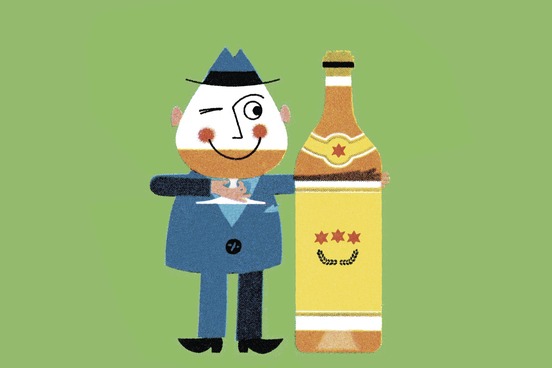


#/media/File:Plato's_Symposium_-_Anselm_Feuerbach_-_Google_Cultural_Institute.jpg))
